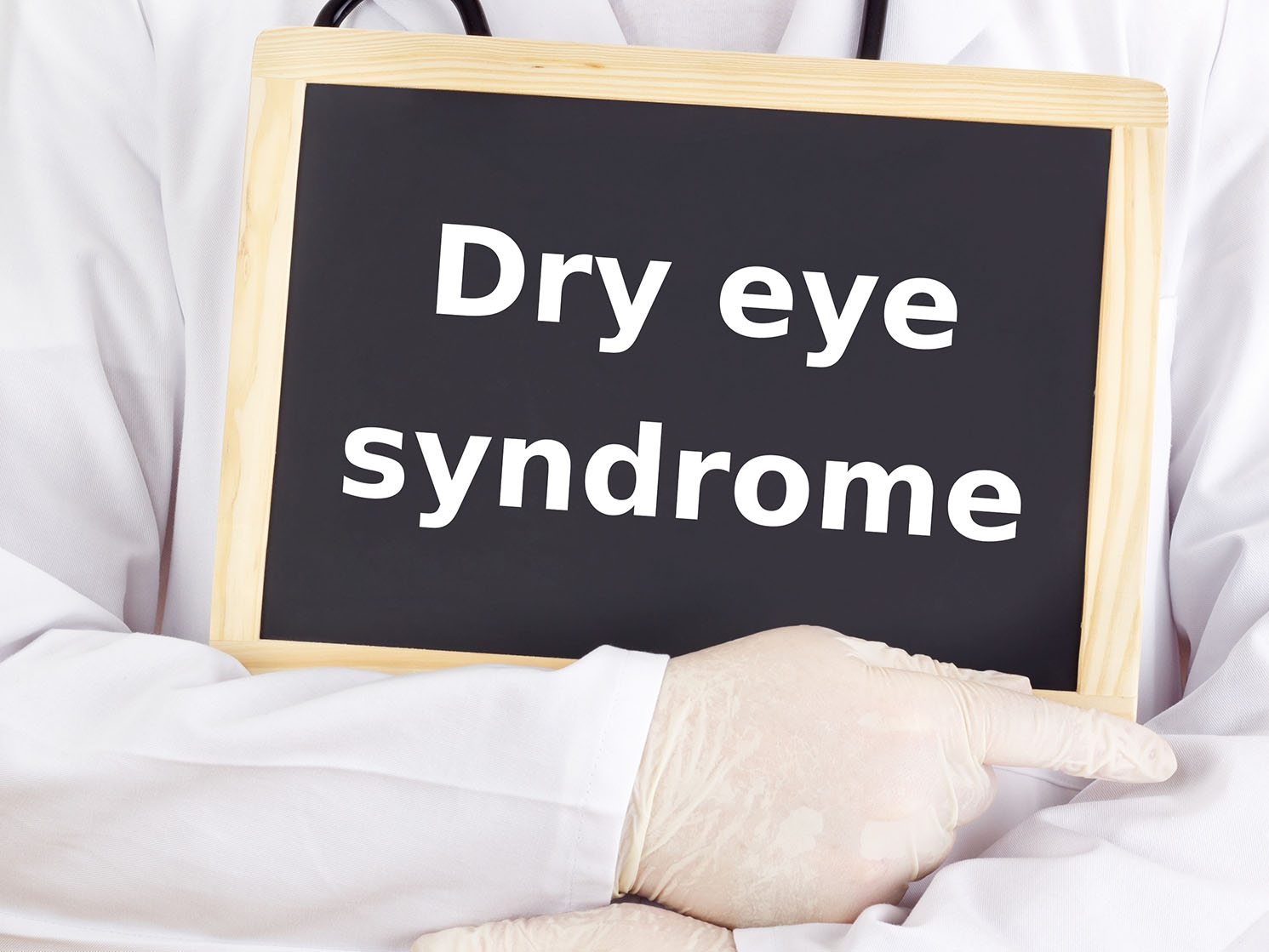The effect of high blood sugar levels on the cornea can also lead to vision loss and blindness. However, people tend to associate diabetes and eye damage only with retina damage i.e.,non-proliferative diabetic retinopathy, and proliferative diabetic retinopathy.
Conditions like corneal edema, corneal nerve alterations due to diabetes, diabetic corneal disease and diabetic keratopathy can lead to vision loss. Though conditions like a dry eye syndrome might not lead to blindness, it is known to be an indicator of other ailments of the eye.
Diabetes and Eyes – Dry Eye Syndrome
We generally get a burning sensation – a feeling of heavy and fatigued eyes when we stare at computers for long periods of time, drive for long hours and are exposed to dusty environments. However, if this condition persists chronically, it is called a chronic dry eye syndrome.
Most people above 40 years and people with type 2 diabetes experience this syndrome. Symptoms of dry eye syndrome include:
- Sore eyes
- Burning sensation
- Heaviness in the eyes
- Fatigue in the eyes
Dry eye syndrome can sometimes also occur with other symptoms like sensitivity to light and blurred vision.
Causes of Dry Eye Syndrome
Dry eye syndrome is known to be caused due to:
- Staring at computers for long periods
- Usage of contact lens
- Smoking (active/passive)
- Driving/flying frequently
- Exposure to dusty environments
- Certain medications like antihistamines
- Decreased production of tears linked to tear gland dysfunction,
- Dysfunction of the tear duct
- Underlying factors like age and diabetes.
Link between Diabetes and Dry Eye Syndrome
Also known as keratoconjunctivitis sicca, dry eye syndrome is a common diabetes and eye complication. It is seen in people with both type 1 and type 2 diabetes. In fact, diabetes is a leading risk factor for dry eye syndrome. It is proportional to HbA1c control. This means that a person with higher HbA1c is more likely to have dry eye syndrome than a person with low HbA1c.
An interesting fact is that there are many associations between non-proliferative diabetic retinopathy and proliferative diabetic retinopathy with dry eye syndrome. In fact, dry eye syndrome might actually be one of the diabetic retinopathy symptoms. This is because diabetic retinopathy is characterized by reduced tear film function, which causes dry eyes.
Diabetes and Eyes – Causes of Dry Eye Syndrome in Diabetes
Cornea consists of numerous nerves. Persistent high blood sugar levels, and uncontrolled diabetes tend to cause cellular level damage to these nerves. When nerve fibers of the cornea are damaged due to diabetes, it leads to reduced corneal sensitivity. This in turn leads to reduction in the production of tears.
As sensitivity of the cornea is decreased and production of tears are reduced, there is more evaporation of tears. This leads to dry eyes.
When nerve damage spreads from cornea to the conjunctiva, lacrimal glands that produce tears, eyelids, and meibomian glands, certain abnormalities might arise. These include loss of tears due to evaporation, abnormal blinking, and changes in the tear film composition along with ocular surface dysfunction.
Diabetes also damages the cornea. Increased HbA1c levels damage the outer layer of the cornea and cause corneal erosion.
Diagnostic Tests for Dry Eye Syndrome
For people with diabetes, the presence of dry eye syndrome is not enough to ascertain the severity of damage done to the cornea. It needs a thorough examination with the help of diagnostic tests like:
- Tear Osmolarity Test
- Tear Break up Time
- Schirmer Test
- Fluorescein Test
These tests are done along with a thorough physical examination, blood tests, and a general ophthalmologic examination including visual acuity.
Diabetes and Eyes – Dry Eye Syndrome Treatment in Diabetes
Treatment is given for people with chronic dry eye syndrome in order to reduce the intensity of the symptoms and to avoid damage to cornea or ocular surface.
How to prevent dry eye syndrome
- Reducing the brightness of computers and smartphones.
- Increasing the frequency of blinking while using computers and smartphones.
- Avoiding dry environments. Wearing protective glasses while driving, while working in industries and to protect from exposure to smoke.
- Increase intake of omega-3 and omega-6 fatty acids as they are associated with reduced rates of dry eye syndrome.
- Supplementation of vitamin B1, vitamin C, vitamin E, and vitamin D as these are known to reduce microvascular complications by decreasing oxidative stress and increasing nitric oxide levels.T hey also assist in maintaining serum concentrations in the body.
- Usage of artificial lubrication for the eyes to provide relief from symptoms of dry eyes.
- Prescription of medications in some cases.
- Surgery might be an option to slow the drainage of tears.
Reaching target HbA1c levels and maintaining glycemic control to reduce the impact and worsening of dry eyes.











